Capestrano
In the summer of 1934, a certain farmer named Michele was digging trenches in his fields when his plough hit something solid. More digging revealed a limestone sculpture, later ascertained to be from the sixth-fifth century BC.
It is the oldest sculpted figure in Italy, the Guerriero di Capestrano.
The warrior has been identified as Nevio Pompuledio. But more interesting to me is what the sculpture reveals about the craftsmanship of a people – the Piceni – who lived in an era almost too distant and too different to imagine, in a landscape which instead has perhaps altered little.
Back to the present
When we arrive in Capestrano on a sunny morning in April the castle is closed and, for different reasons, the church too, so we head for one of two bars in the main square. There are seats outside on the terrace but I venture inside to find something to eat.

Inside, the owner, a middle-aged woman with hair the colour of a ripe victoria plum, is on the phone taking a booking for lunch. She gives me a ‘be-with-you-in-a-minute’ nod and with little else to do, I devote myself to eavesdropping. Time passes as the caller fusses about the proposed menu. I can’t help admiring the patient and relaxed way the woman answers every question.
In a northern city this prolonged wait might be enough to raise tension levels a notch but here in the hills of Abruzzo the conversation is calm and unhurried. The lunch, I learn, is for 12 guests, a few days from now. Looking round the cramped, slightly gloomy interior, I find it hard to imagine where they might sit. On the terrace, no doubt, (though on the day of the lunch, I am sad to report, it rained cats and dogs).
At last the call comes to an end and I order our coffees and the solitary cake – a sort of crostata crammed with almonds, walnuts and hazelnuts – and return to the sunny terrace. Though we’re more than 450m above sea level, the air is warm, and fragrant with the first blossoms. Our coffees arrive and the crostata turns out to be delicious. We sit back and look around us.
Castello Piccolomini
This pretty little town was probably formed around the ninth century by some stragglers who’d been wandering the valley since the Lombard invasion and destruction of their home, the important Roman centre of Aufinum. Over the centuries the citizens of Capestrano were governed by a series of powerful families, including the Acquaviva, whom we met in Atri, as well as the Medici, Grand Dukes of Tuscany, and the ambitious patricians of Siena, the Piccolomini, whose name lives on at the castle, their former home.

The Castello Piccolomini stands like a fortress at one end of the square, the church, now caged in scaffolding following the earthquake that destroyed nearby L’Aquila, at the other.

John of Capestrano
There might, though, be something else to see. On the way into town, I noticed that here in Capestrano is the house where St. John was born. I decide to find out more from the kind and patient bar owner, who is wiping down some nearby tables. Showing off that I know of more than one saint bearing the name, I ask her which one was born here.
‘Just a local saint’, she shrugs. I press for more details. She tells me that pilgrims come here because St. John has been known to work miracles. I detect a note of scepticism.
‘But’, she adds, giving a nearby table an unnecessarily aggressive wipe, ‘I took my husband down there and he’s just the same as ever’.
Undeterred, I set off for the house alone, down intimate lanes flanked by quaint, crooked houses in bleached stone. Sometimes I catch glimpses of the valley below and I imagine there are days when a bitter wind comes howling up through the gaps between the houses.
Today the air is still and raised voices sail across to me from an open window. I soon discern that the subject of the argument is food and feel reassured. All is as it should be.

At last I arrive at the house of St. John, a modest cottage in hewn stone like the others, but with a generous view of the valley and the mountains beyond.

The saint, I learn, though he was born here, spent much of his long life away from the place, (also studying in Fiesole, near Florence), and he is mainly known as an evangelist and inquisitor. In the latter role he doesn’t seem to have been too tender-hearted.

Coincidentally, he was born on 24 June, the feast day of one of the other St. Johns in my pitiful personal pantheon: that is, the Baptist, patron saint of Florence

Il Guerriere di Capestrano
But let’s return to our Warrior, whose fame and connections with Capestrano surpass those of St. John. The original sculpture, which was a funerary stele, is in the archaeological museum in Chieti, though there is a copy in the Castello Piccolomini.
I have seen the famous warrior. You can read about the experience here.
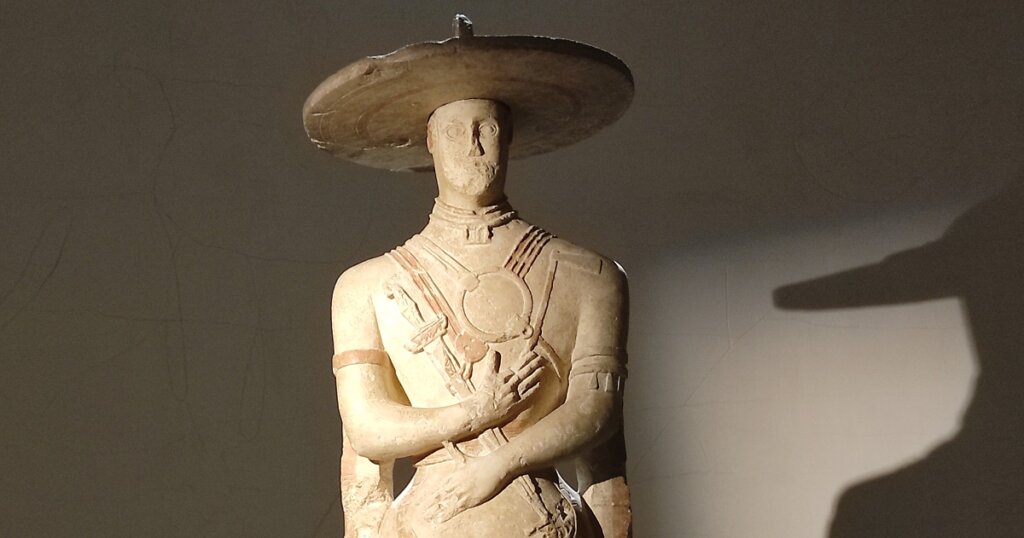
He stands tall and straight and is armed to the teeth. Neither his dainty hands nor the feminine roundness of his hips and thighs – and not even his headgear, more like a jaunty sombrero than a helmet – detract from the nobility of his stature and expression.
The sculpture is no sideboard ornament. It stands over two metres tall, excluding the base. To think that such an enormous and equisitely carved block of stone lay undisturbed under the earth for 25 centuries till Michele came digging.
Now that’s what I call a miracle.
All you need to know
To get to Capestrano: follow the A24 dei Parchi, Roma-L’Aquila, exit L’Aquila Est, and then SS17 and SS153.
From Pescara, the A25 Pescara-Roma, exit Bussi Popoli, take the SS5 and then SS153.
Currently the Castello Piccolomini is open only on Saturdays and Sundays to facilitate restoration work. Opening hours: 10am-12.30pm, 3-6pm.


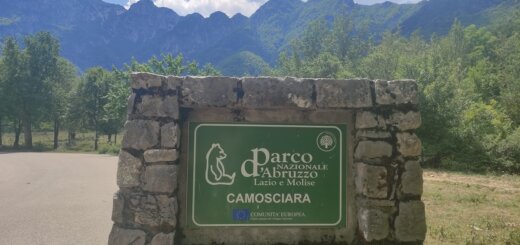
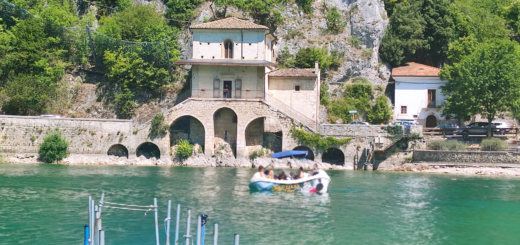
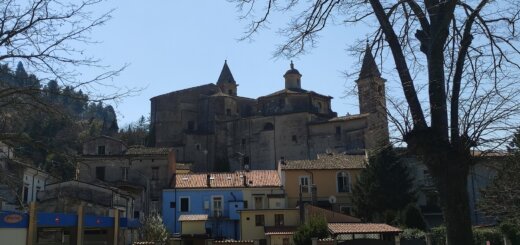

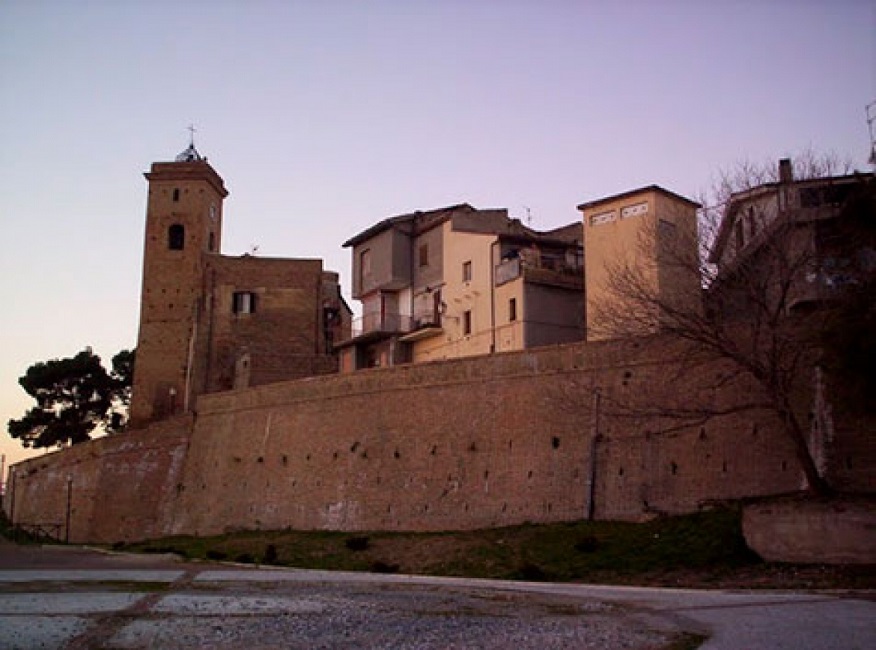
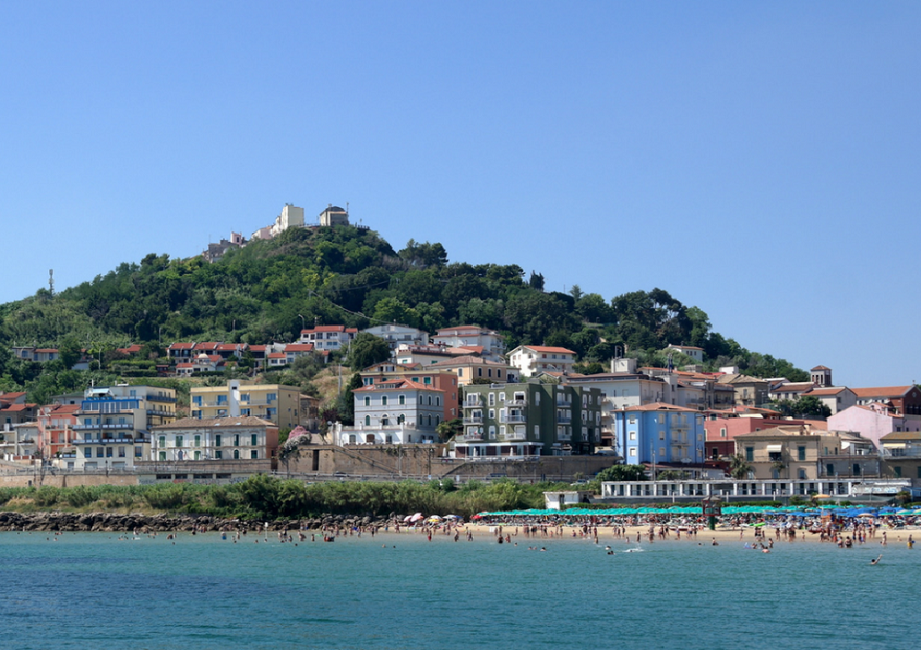
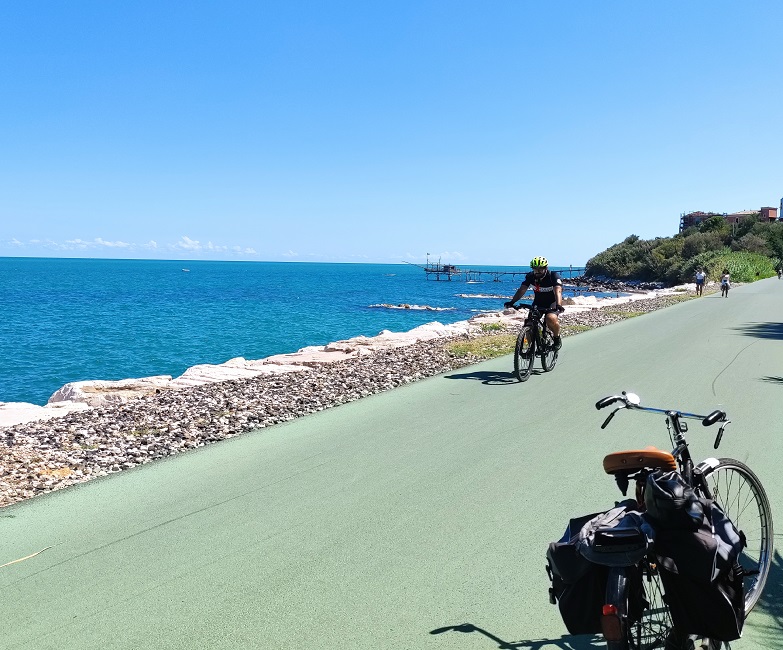
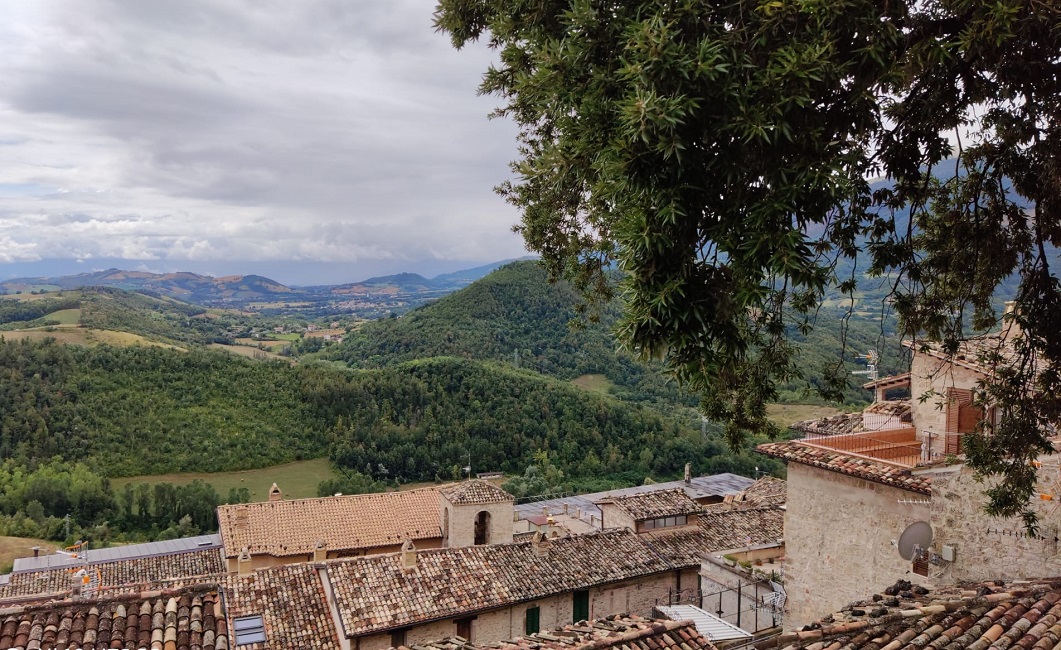
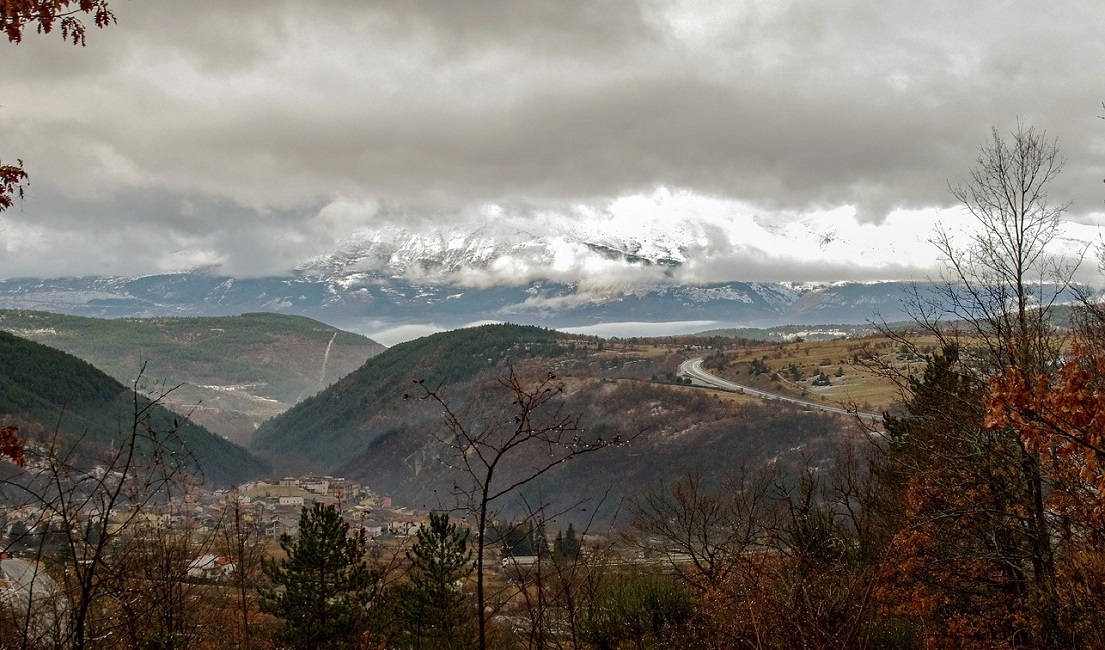
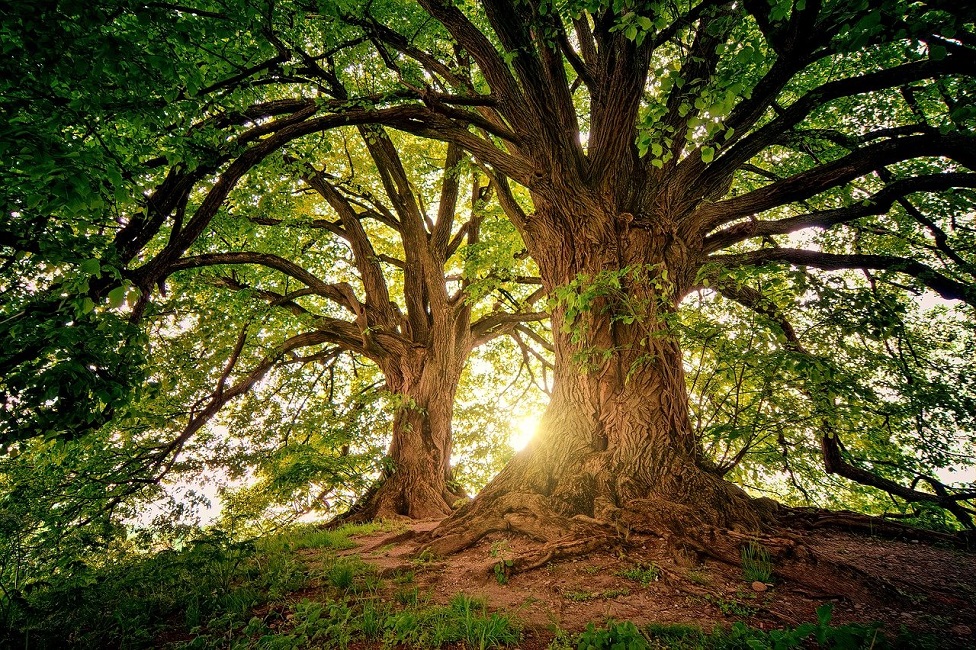
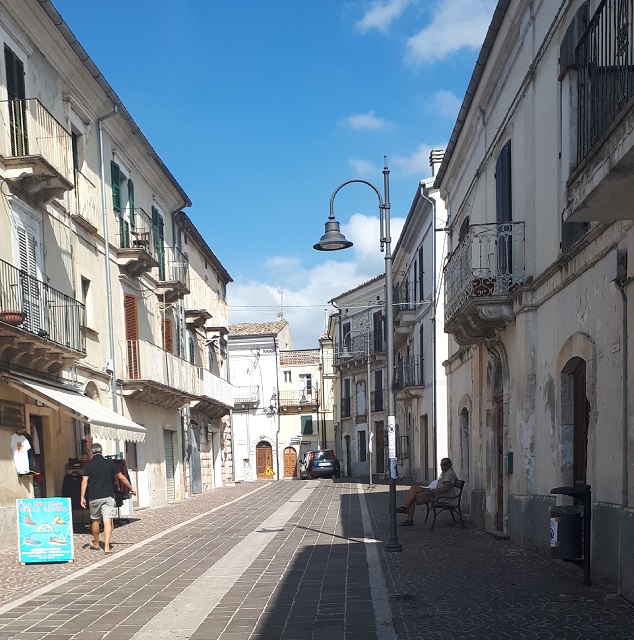
2 Responses
[…] You can find details of the location and circumstances of his discovery here. […]
[…] Capestrano […]